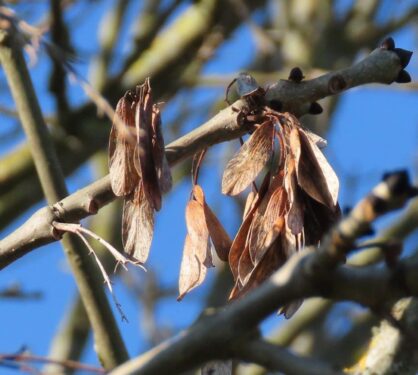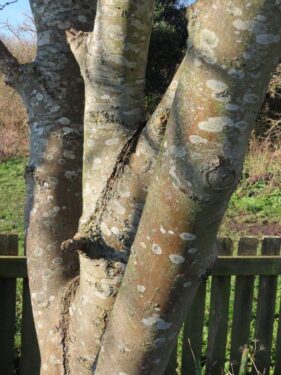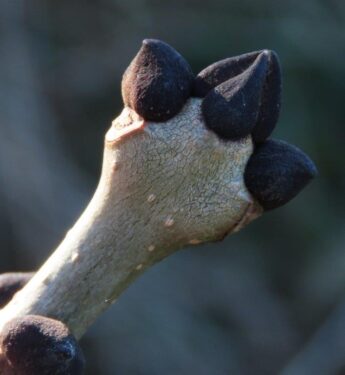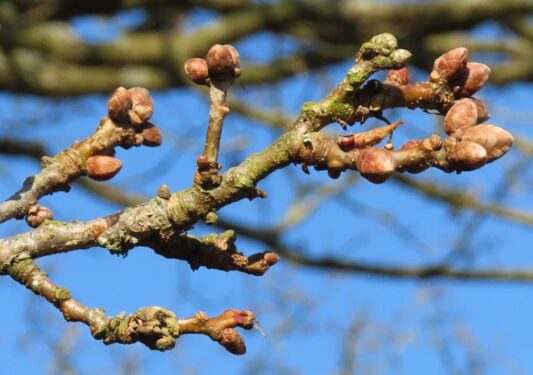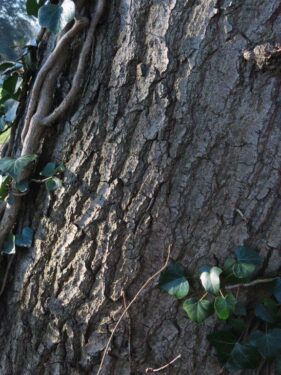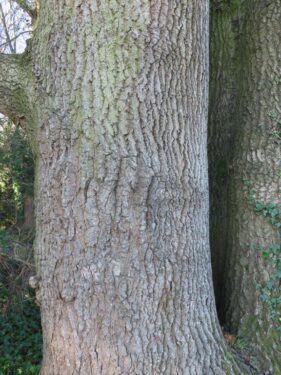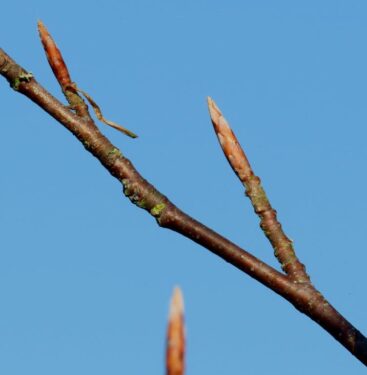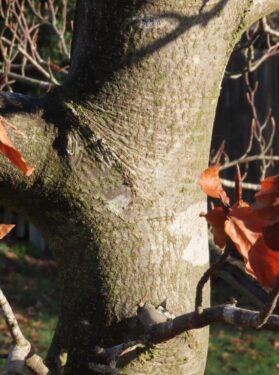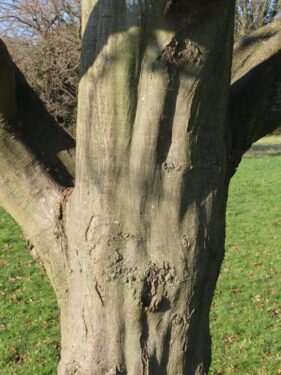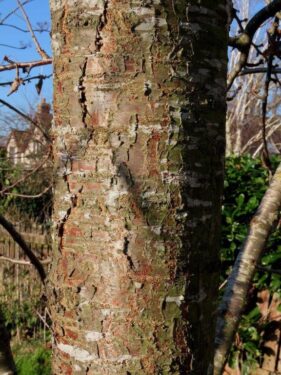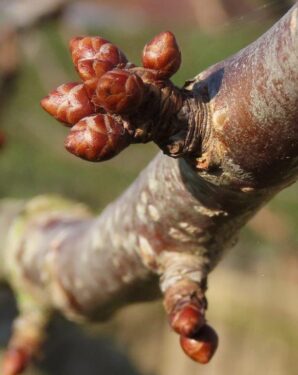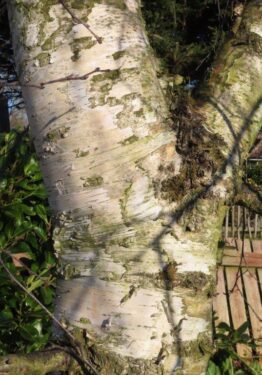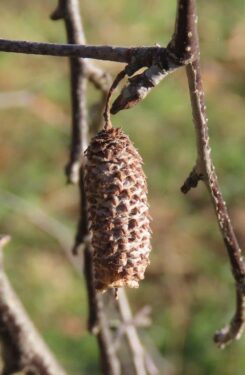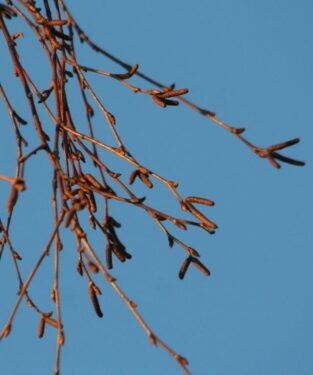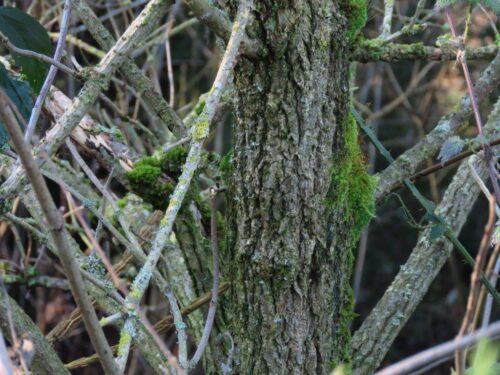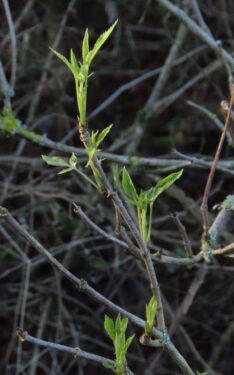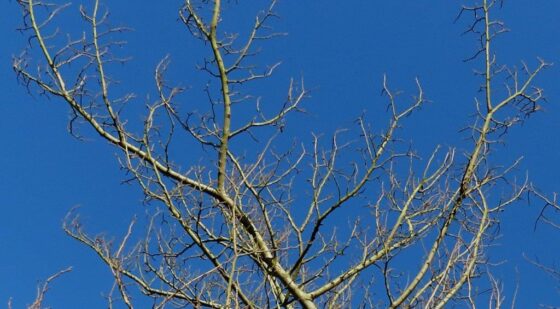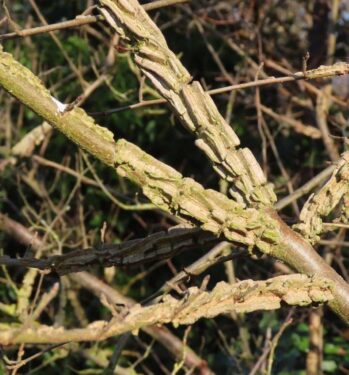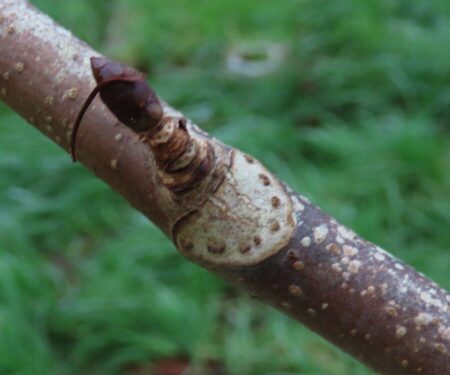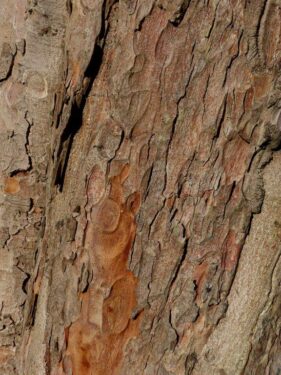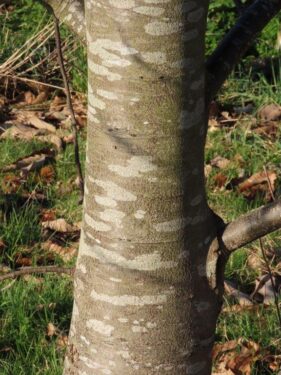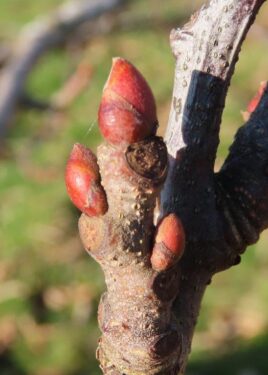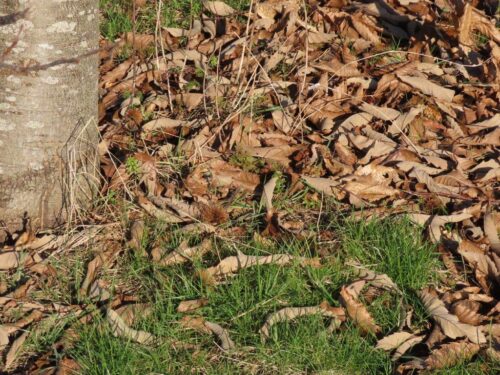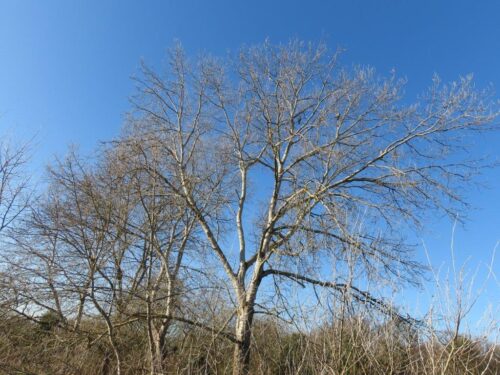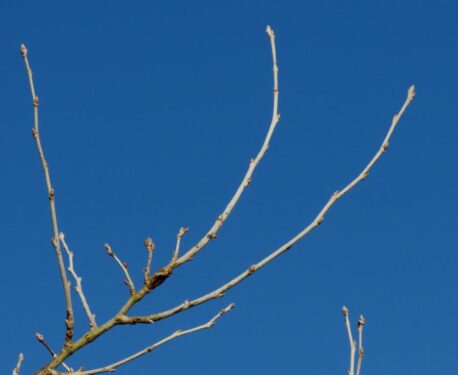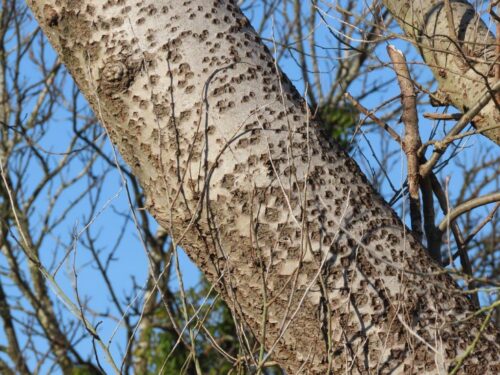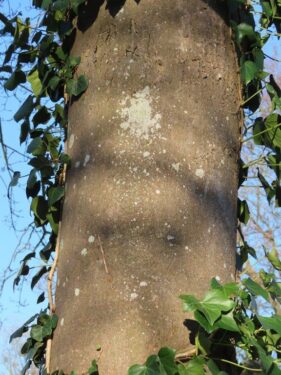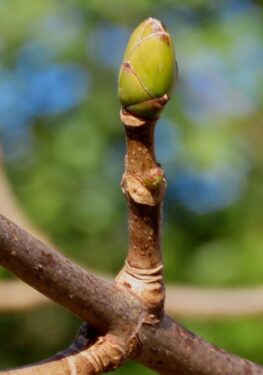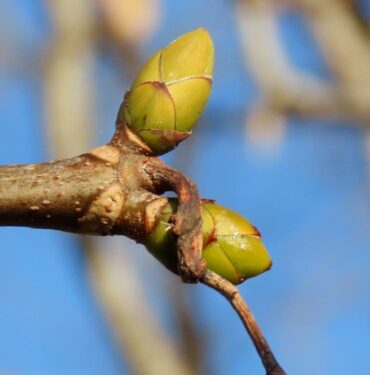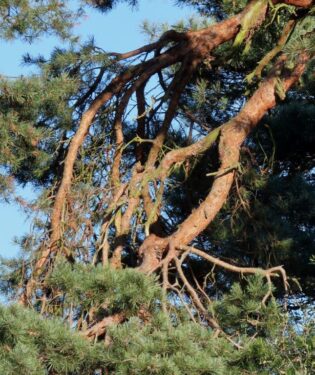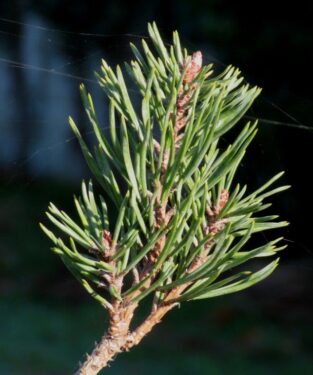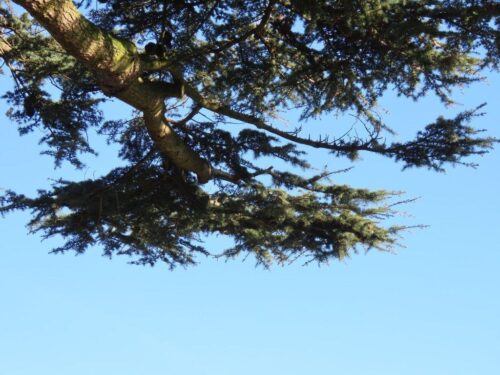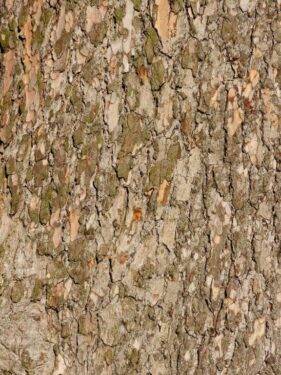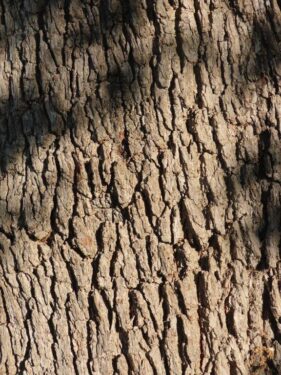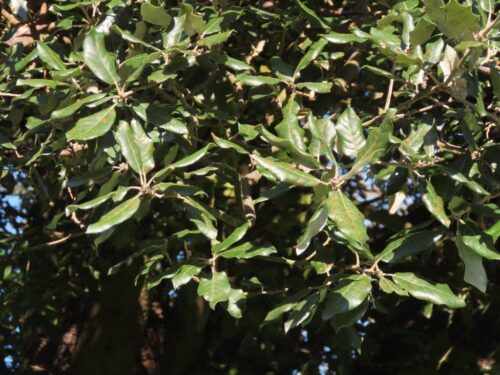Two years ago, in a very different world, we ran our last midwinter tree walks around the KGV. The blog linked here focussed on the buds and twigs, and gives a good idea of the features to look for on a selection of the species to be found. Of course, the identification of trees in winter also uses a further series of characteristics, from fallen leaves, shrivelled fruits and the nature of the bark, elements we brought into our #WildEssex walks this month. Here is a selection (photographed during our recce in much more pleasant weather than the fog of the Saturday walk!).
ASH – in addition to its unmistakeable black buds, mostly in opposite pairs, with flattened twig tips, Ash also has smooth, pale bark, often covered in lichens, and usually has some of the bunches of keys from last summer perched in its boughs.
OAK – the plump, chestnut-coloured buds are clustered at the tips of the twigs that arise from the branches that come from the trunk, covered in deeply ridged bark, the fissures more or less continuous, running down the trunk. Sometimes, in older specimens, the trunk is divided, by coppicing or pollarding, especially on old ownership boundaries where distinctive trees were used to define those boundaries legally, by way of a ‘perambulation’.
BEECH (upper two) and HORNBEAM (lower two) – The elongate, pointed shape of the buds of these two species is similar, but those of Beech are set at an angle to the twig, while those of Hornbeam are curved into the twig. Beech often has dead leaves still attached in midwinter, and smooth, silvery bark, with raised lines, rounded in profile, running down it. Hornbeam bark is similarly smooth, but the trunk is usually fluted, like a rippling muscle.
And then to three fast-growing, often small species, good at colonising suitable habitats:
WILD CHERRY has clusters of buds borne on short, woody pedestals, and peeling, copper-coloured bark formed into distinct hoops around the trunk…
… while SILVER BIRCH has lovely white bark, delicately drooping branch tips, and often has remnants of last year’s seeding catkins at the same time as the coming summer’s catkins are starting to emerge…
… and ELDER has deeply ridged grey bark, often covered with mosses. It is also the first of our trees to burst into leaf, a true harbinger of Spring.
ELM is often distinguished as much by its dead stems, the victims of Dutch Elm Disease, as by its living features. But on a living trunk, the herringbone branching pattern of the twigs is usually apparent, as often are the main branches clothed in corky wings of bark.
Another tree bedevilled by disease is HORSE CHESTNUT, especially worrying in view of its rarity in its native Caucasus. The big, swollen buds with sticky scales are well known, but the horseshoe-shaped leaf-scars and smooth bark breaking into a patchwork of plates are equally distinctive.
Similar in name, but very different (and completely unrelated), the SWEET CHESTNUT is often noticeable by its halo of dead leaves lying on the ground, as they take several months to decay away. Its plump buds sit on ‘shelves’ on the ridged twigs, and the bark of a small tree is smooth and silvery, in marked contrast to an older tree where the bark is strongly fissured, twisting around the trunk.
Two of our most distinctive winter trees are WHITE POPLAR, with its graceful, upswept branches, whitish twigs and buds, and hoops of large, diamond-shaped lenticels on its bark….
… and the smooth, grey bark, large, turgid buds, almost fit to burst, and beautiful bud-scales, edged in maroon and fringed in white, of SYCAMORE.
Finally, mention must be made of the evergreens, historic adornments to the grounds of the former Wivenhoe Hall. The red-boughed SCOTS’ PINE (top) is one of only three native conifers in Britain, CEDAR-OF-LEBANON (middle) is another species threatened in its native Middle Eastern home, and HOLM OAK (bottom), native to the Mediterranean basin. But the presence of leaves or needles doesn’t necessarily make identification easier: it is always worth getting to know their distinctive fruits, tree shapes and bark. No rest for the botanist, even in midwinter!
